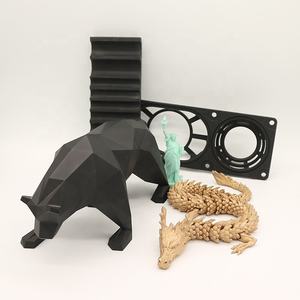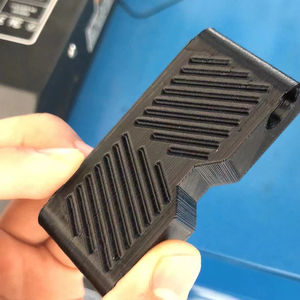The Stuff That Makes 3D Printing Magic Happen: Plastics, Metals, and Beyond
(What Materials Are Used For 3d Printing)
Imagine building a car part, a pizza, or even a human ear using just a machine. That’s 3D printing for you. It’s like a high-tech glue gun that stacks layers of material to create objects. But what exactly goes into these machines? Let’s break down the wild mix of materials that turn digital blueprints into real-world stuff.
Plastics are the rock stars of 3D printing. You’ve probably heard of PLA. It’s the go-to material for beginners. Made from cornstarch or sugarcane, it’s eco-friendly and smells like candy when melted. ABS is another plastic favorite. Tougher than PLA, it’s used for things like LEGO bricks or car parts. Need something bendy? TPU is your guy. This rubber-like material can make phone cases or shoe soles that twist without breaking.
But plastics aren’t the only players. Metals step in when things need to be strong. Stainless steel prints gears or tools that can handle heavy use. Titanium is even tougher. It’s light, doesn’t rust, and is perfect for medical implants like hip replacements. Aluminum pops up in aerospace parts because it’s strong but doesn’t weigh a ton. Fancy jewelry? Precious metals like gold or silver can be 3D printed too.
Ceramics might surprise you. Yes, the stuff of coffee mugs and plates. 3D-printed ceramic objects start as clay-like paste, get fired in a kiln, and boom—you’ve got intricate vases or heat-resistant engine parts. They’re brittle, but they handle extreme temperatures like champs.
Now for the weird stuff. Ever seen a 3D-printed burger? Food printers use edible “inks” like chocolate, dough, or mashed potatoes. They’re not replacing chefs yet, but they’re great for custom cake decorations or fancy pasta shapes. Bioprinting takes it further. Scientists experiment with “bioinks” made from living cells to print skin grafts or even mini organs for drug testing.
Concrete isn’t just for sidewalks anymore. Giant 3D printers squeeze out layers of concrete mix to build house walls or bridges. It’s faster than traditional methods and cuts down on waste. On the flip side, some printers work with glass. By melting glass powder, they create delicate sculptures or lenses with crazy precision.
Recycled materials are joining the party. Old plastic bottles can be shredded into filament for basic prints. It’s not perfect, but it gives trash a second life. Researchers even try printing with sawdust or coffee grounds mixed with binders. These materials won’t handle heavy loads, but they’re fun for eco-friendly crafts.
Every material has limits. Plastics melt if they get too hot. Metals cost a lot and need special printers. Food prints might look cool but don’t always taste gourmet. The magic is picking the right material for the job. A toy robot? PLA works. A jet engine part? Crank up the metal printer.
New materials pop up all the time. Self-healing plastics fix their own cracks. “Smart” materials change shape when heated or exposed to light. Graphene—a super-thin carbon—could revolutionize printing with its strength and conductivity. The future might include printing entire electronics in one go, circuits and all.
(What Materials Are Used For 3d Printing)
3D printing isn’t magic, but it’s close. The real trick is in the materials. They decide whether your creation is flimsy or fortress-strong, bland or biodegradable. Next time you see a 3D-printed object, remember—it’s not just plastic or metal. It’s a carefully chosen ingredient in a recipe for turning imagination into reality.
Inquiry us
if you want to want to know more, please feel free to contact us. (nanotrun@yahoo.com)

